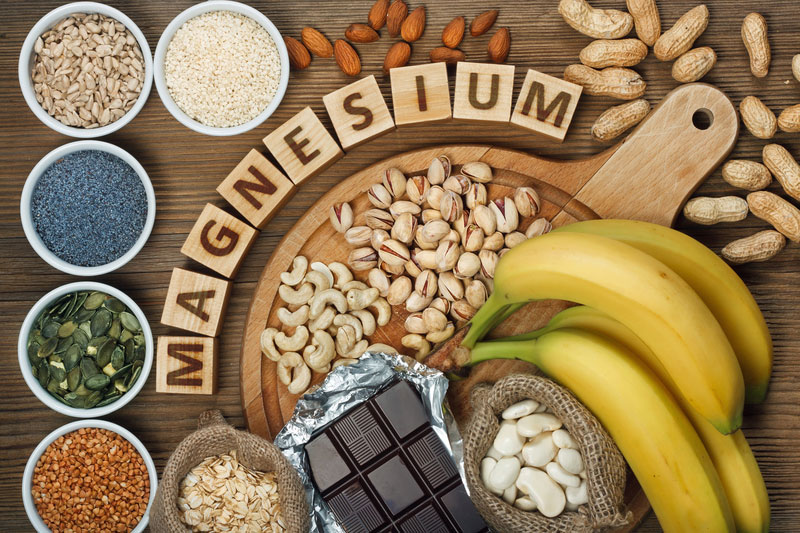How To Understand The Difference Between Type 1 and Type 2 Diabetes
According to the American Diabetes Association, there are approximately 1.4 million cases of diabetes diagnosed each year. Nearly eighty-six million people in the United States with prediabetes are on their way to becoming diagnosed with type 2 diabetes. Although there are several forms of diabetes, there is much confusion about the difference between type 1 and type 2. Here is a look at the differences between the two most common forms of a disease that is becoming a global problem.
What Is Type 1 Diabetes?

Type 1 diabetes is an autoimmune condition that occurs when the body’s immune system attacks the beta cells living in the tissue of the pancreas. This causes the pancreas to produce little to no insulin, which is a hormone that allows cells to use glucose for energy. Insulin makes sure the body’s blood sugar levels do not get too high or too low. People with type 1 diabetes do not have a properly functioning pancreas and cannot properly distribute glucose to cells in the body.
Causes

The causes of autoimmunity are unknown. Experts have linked several triggers to autoimmunity, such as stress, a diet high in refined sugars and carbohydrates, a lack of physical exercise, poor sleeping habits, and excessive smoking or drinking. Certain genetic factors may also increase the risk of autoimmunity. Autoimmune conditions tend to run in the family. A person with a family history of any autoimmune disorder, not just type 1 diabetes, may be at an increased risk. Certain viruses or illnesses may also be linked to type 1 diabetes.
Risk Factors

Up to ten percent of all diabetic patients are diagnosed with type 1 diabetes. Although anyone can develop type 1 diabetes at any age, it is most common in young people under the age of twenty years old. The disease occurs in approximately one out of every two hundred and fifty Americans, making it relatively uncommon. It is less common in people of American-American and Latino descent and more common in people of European ancestry. Men and women are affected equally.
Symptoms

Common symptoms of type 1 diabetes include weight loss, extreme thirst, frequent urination, and dehydration. Other symptoms may include bedwetting, blurry vision, a rapid heartbeat, fatigue, vomiting, and nausea. Symptoms usually come on fairly quickly within a few days to a few weeks. Extreme hunger, mood changes, irritability, and food cravings may also occur. Lightheadedness when standing up may also occur due to low blood sugar levels. Numbness or tingling in the legs is an early symptom of diabetes.
Diagnosis

Type 1 diabetes is diagnosed by checking for high blood sugar levels and the presence of ketones, which are the byproducts of the breakdown of fat. A doctor may order a HbA1c test to determine blood sugar levels over the past three months. A random blood sugar test or a fasting blood sugar test may also be done. A doctor may diagnose type 1 diabetes by performing an antibody test or checking C-peptide levels, which is the byproduct of insulin in the pancreas.
Treatment

As with other autoimmune conditions, there is no cure for type 1 diabetes. Treatment consists of monitoring blood sugar levels and injecting insulin into the body with an insulin pen, pump, or syringe. Most people with type 1 diabetes will need insulin injections for the rest of their life. Alternative therapies, such as diet interventions, can be used; however, people with type 1 diabetes should never go off their insulin without consulting a doctor first.
Blood Sugar Monitoring

People with type 1 diabetes usually need to check their blood sugar levels four times a day. This number may vary depending on each individual’s unique needs. Some people may need to check their blood sugar levels as many as ten times a day. People with type 1 diabetes may choose to use a continuous glucose monitoring device to track their blood sugar levels diabetes testing kit. Pumps are also available to inject insulin directly into the stomach. A doctor can determine which method of insulin injection is best.
Managing Type 1 Diabetes

People with type 1 diabetes may benefit from controlling and counting the amount of carbohydrates they eat because carbohydrates are the body's primary source of glucose. Insulin levels can be predicted by determining how many grams of carbohydrates were eaten at each meal. It is recommended that people with type 1 diabetes stay active, but they may need to monitor their blood sugar levels and adjust their carbohydrate intake to prevent a low blood sugar condition called hypoglycemia.
What Is Type 2 Diabetes?

The main difference between type 1 and type 2 diabetes is that type 2 diabetes is not an autoimmune condition. In many cases, type 2 diabetes can be reversed. It is a chronic disease that affects that body’s ability to use glucose. Type 2 diabetes results from insulin resistance or a condition that is characterized by difficulty using insulin correctly. People with type 2 diabetes may also experience abnormal insulin secretion, which causes glucose to build up in the bloodstream. Both forms of diabetes are equally dangerous.
Causes

Type 2 diabetes is ultimately caused by insulin resistance, which is due to a combination of lifestyle and genetic factors. Being overweight, having an improper diet that includes excessive amounts of foods high in refined sugar and carbohydrates, and a lack of physical activity may also cause type 2 diabetes. Because type 2 diabetes is not an autoimmune disease, it does not occur as a result of an immune system dysfunction like Type 1 diabetes does.
Risk Factors

Type 2 diabetes accounts for up to ninety-five percent of diabetes cases. It tends to run in the family and is more prevalent in the following ethnic groups: Latinos, African Americans, Native Americans, Pacific Islanders, and Asian Americans. Women who have been diagnosed with gestational diabetes have a higher risk of developing type 2 diabetes within ten years. It is estimated that one in three adults in the United States will have type 2 diabetes by the year 2050.
Symptoms

The most common symptoms of type 2 diabetes include weight gain or weight loss, blurry vision, poor wound healing, excessive thirst, fatigue, and excessive hunger. Obesity increases the risk of type 2 diabetes; however, during the early stages of type 2 diabetes, a person may experience unexplained weight loss. Food cravings tend to occur because the body’s cells are not getting the glucose they need, which increases the need for glucose consumption.
Diagnosis

A physician can diagnose type 2 diabetes using a random blood test, an oral glucose intolerance test, a fasting blood sugar test, or a HbA1c test. A blood test may need to be conducted more than once before a diagnosis can be made. In some cases, several different blood tests may be ordered before making a diagnosis. A blood test may be ordered if a patient has a family history of diabetes and experiences one or more symptoms.
Treatment

There is no cure for type 2 diabetes; however, it can be managed or even reversed with dietary intervention. Removing processed or refined sugars and carbohydrates from the diet may be able to reverse diabetes and the need for insulin injections. Other forms of treatment include surgery and various types of injectable medications. Because the disease may change and progress over time, patients may need to change medications based on their needs.
Blood Sugar Monitoring

Some people with type 2 diabetes do not check their blood sugar levels even though it is a good idea to do so. Checking blood sugar levels helps monitor the disease and allows a physician to adjust medication if needed. The number of times a day that blood sugar levels need to be adjusted depends on the severity of the disease. A doctor can help determine the best way to monitor blood sugar levels in type 2 diabetic patients.
Managing Type 2 Diabetes

One of the best ways to manage type 2 diabetes is to control the intake of refined carbohydrates, which are found in foods that contain enriched white flour and high-fructose corn syrup, among others. Concentrate on eating fresh fruits and vegetables, which are highly anti-inflammatory and help support a healthy weight. Drink water in place of soda or sweetened tea, aim for seven to eight hours of sleep at night, and work with a doctor to develop a healthy exercise routine.
